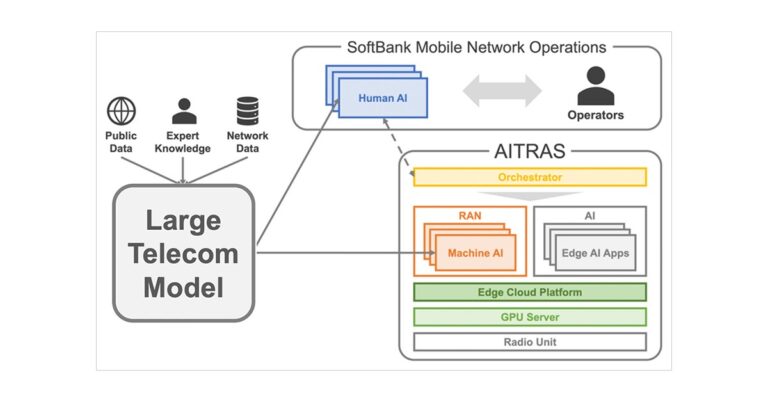AI. Its a word that evokes both excitement and apprehension. While some companies race to capitalize on the hype, many rightly remain hesitant, deterred by the known LLM negatives, any real need or required use case and therefore the perceived complexity and cost of implementation. But what if there was a different path? A way to harness the transformative power of AI in a responsible, affordable, and accessible way, benefiting businesses and humanity?
The vision of Assistive Intelligence rather than Artificial Intelligence, using combined small and specialised (SLMs) rather than Large Language Models (LLMs) won’t cost the earth in terms of Pockets People Planet.
To champion open-source technology within the context of privacy, is to understand the importance of grounded innovation. While others shout the loudest, we for our sins find the owners of problems, solve them and get paid. That’s right no pump and dump Venture Capital, it’s called organic growth not the bootstrap tag being thrown around nowadays. We quietly build, empowering optimistic individuals within organizations to explore the potential of the Assistive version of AI without the inflated price tag or big energy bills.
You need a solid minimum viable product for the AI journey so that you and your people can explore and harness the possibilities of assistive intelligence using a surprisingly small assistant that you can speak to in plain English. If your people know their job they will know the questions that will unlock the secret sauce of your challenger enterprise.
Trained on your company or organizations knowledge, backed up by tried and trusted external insight sources, you want loyal assistive intelligence living on-premises or in private cloud. You also need a private buy-to-own system designed to work for people and planet, focusing on practical use cases and target markets rather than the rent-seeking overkill that is changing with the wind.
Imagine a world where powerful AI tools are within reach of small businesses, non-profits, and even individuals. This is the promise of private, small language model (SLM) solutions, offering key enterprise-grade features without the enterprise-grade price. Let’s delve into some specific use cases and the vertical markets they serve:
1. AI-Powered Super Search: Unlocking Hidden Knowledge
Use Case: A local historical society struggles to index its vast archive of documents and photographs. Using Super Search, they can quickly digitize and index their collection, making it searchable by keyword, date, or even subject matter. Lost information is easily recovered, and tribal knowledge held only in the minds of a few members is captured and preserved for future generations.
Vertical Markets: Libraries, archives, museums, small businesses with extensive documentation, research institutions, and even individual researchers.
2. AI-Driven Data Insights: Transforming Raw Data into Strategy
- Use Case: A small organic farm collects data on soil conditions, weather patterns, and crop yields. The Data Analyst tool allows them to ask questions in plain English, such as “What were the average yields for tomatoes in the past three years during periods of drought?” The system instantly generates graphs and statistics, revealing valuable insights that inform planting decisions and optimize resource allocation.
- Vertical Markets: Agriculture, small businesses with any form of data collection, environmental monitoring, local government, and even personal finance management.
3. AI-Powered Report Writing: Simplifying Compliance & Reporting
- Use Case: A local community center needs to generate regular reports for its funding agencies. The Report Writer tool automates this process, pulling data from various sources and formatting it according to specific requirements. This saves time, reduces errors, and ensures compliance with regulations.
- Vertical Markets: Non-profits, community organizations, small businesses with reporting requirements, healthcare providers, educational institutions, and any industry dealing with regulatory compliance.
4. AI Knowledge Graphs: Mapping Relationships for Smarter Decisions
- Use Case: A small business owner wants to understand the relationships between their customers, products, and suppliers. The Knowledge Graph Creator extracts this information from their CRM and other data sources, building a visual map of these connections. This allows them to identify key influencers, understand supply chain vulnerabilities, and discover new business opportunities.
- Vertical Markets: Any business with customer or product data, supply chain management, market research, competitive analysis, and even personal knowledge management.
5 AI Insights Tool: Extracting & Analyzing Data from Any Source
For this one we are going to do a deep dive. This tool empowers users to gather and consolidate data from various sources, turning disparate information into actionable insights. Its key strengths lie in its ability to extract data from traditionally difficult formats like PDFs, as well as readily available data from Excel files and websites.
1. PDF Data Extraction: Unlocking the Vault of Information
- Use Case: A market research firm needs to analyze industry trends from a collection of PDF reports. The Insights Data Hoover automatically extracts tables and text from these PDFs, converting them into a structured format suitable for analysis. This saves countless hours of manual data entry and allows researchers to quickly identify key trends and insights.
- Vertical Markets: Market research, legal, finance (analyzing contracts, financial statements), academic research (extracting data from scientific papers), government (processing reports and documents), and any industry relying heavily on PDF documents.
2. Excel File Integration: Consolidating Information Silos
- Use Case: A small business owner maintains sales data in one Excel file, customer information in another, and inventory data in a third. The Insights Data Hoover seamlessly integrates data from these disparate Excel files, creating a unified dataset that can be used to generate comprehensive reports and dashboards. This provides a holistic view of the business and facilitates better decision-making.
- Vertical Markets: Small and medium-sized businesses (SMBs), accounting, sales, marketing, human resources, and any organization using Excel spreadsheets for data management.
3. Website Data Extraction (Web Scraping): Capturing the Pulse of the Web
- Use Case: A competitor analysis firm wants to track pricing and product information from various e-commerce websites. The Insights Data Hoover automatically extracts this data, allowing the firm to monitor competitor activity, identify pricing trends, and gain valuable insights into the market landscape.
- Vertical Markets: Market research, competitive intelligence, e-commerce, price comparison websites, lead generation, and any industry relying on publicly available website data.
Combined Power: Synergy and Enhanced Insights
The true power of the Insights Data Hoover lies in its ability to combine data from all three sources. Imagine:
- A journalist: Researching a story by extracting data from government PDFs, financial reports in Excel, and news articles on the web, all consolidated into a single, searchable database.
- A non-profit: Analyzing the impact of their programs by extracting data from internal Excel spreadsheets, external reports in PDF format, and public sentiment expressed on social media platforms (website data).
- An investor: Evaluating investment opportunities by extracting key financial figures from company PDFs, analyzing market data from Excel files, and monitoring news and commentary on financial websites.
Beyond Automation: Empowering Informed Decisions
The Insights Data Hoover is more than just a data extraction tool. It’s a key to unlocking hidden knowledge, empowering users to make better decisions based on comprehensive and readily available information. By simplifying the process of data collection and consolidation, it democratizes access to valuable insights, leveling the playing field for small businesses, researchers, and individuals alike.
Beyond the Bottom Line: A Focus on People and Planet
The accessibility and affordability of private AI solutions extend beyond mere cost savings. They empower individuals and small organizations to tackle complex challenges, contributing to a more sustainable and equitable future. Imagine:
- Environmental groups: Using data analysis to track pollution levels and advocate for change.
- Local communities: Building knowledge graphs to understand social needs and allocate resources effectively.
- Small businesses: Competing more effectively with larger corporations by leveraging the power of AI.
The narrative around AI needs to shift to Assistive rather than Artificial. It’s not just about big tech and futuristic robots. It’s about empowering individuals and communities to create a better world. By embracing private, affordable AI solutions, we can move beyond the hype and unlock the true potential of this transformative technology for the benefit of people and planet.
Written by Neil Gentleman-Hobbs, smartR AI



















